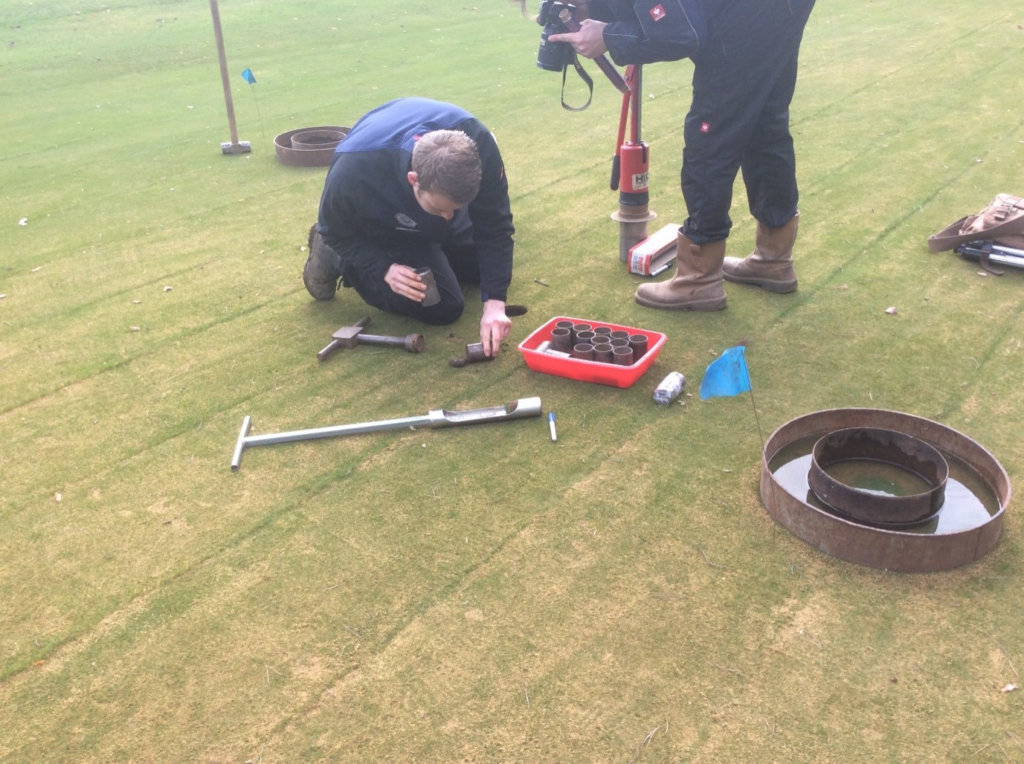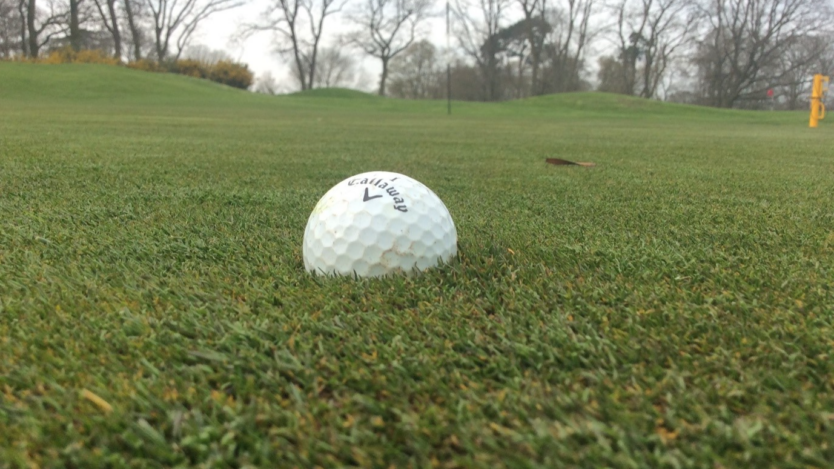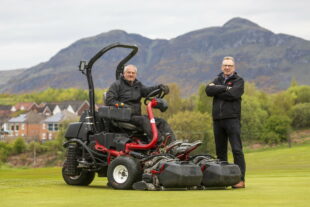STRI Consultant Agronomist, Ben Morgan says only one in three clubs get it right but confronting issues could see a big lift to a club’s bottom line
Do you recall the long summer days when we were crying out for rain? It certainly came with a vengeance during November and December, just in time for the run up to the holiday season. The last thing any course needs is closed greens or disgruntled members complaining about soft and unstable putting surfaces.
The weather is undoubtedly changing and there is a significant risk that greens will remain soft and unplayable through the winter. Even when dry, greens with issues during the winter are likely to underperform during the main season.
The following information suggests several ideas on understanding the issues and forming a plan of action to provide a 2-5-year period of improvement, as there are rarely quick fixes to solve the problem during winter.
Climate change
In recent decades we have experienced an increased number of wet weather events, with golf courses and water courses flooding more regularly. The intensity of weather events is also increasing, and soils and constructed profiles with low percolation rate rapidly become inundated.
Weather data from the Met Office shows the UK has become wetter over the last few decades, although with significant annual variation. 2011-2020 was 9% wetter than 1961-1990. We can’t control the weather, but we can control the micro-climate of the greens and put processes in place to help mitigate the negative effects on our golf courses. Winters will get wetter, so action needs to be taken with immediate effect.
What is thatch?
Thatch is a common name for organic material when it forms an excess accumulation in the greens’ profile (typically in the top 50mm but sometimes deeper if layered). This material is created over years, when dead and decaying roots and leaves from the grass plant accumulate below the turf surface. This layer of spongy organic material tends to hold moisture, slow percolation rates, and cause softer greens.
Thatch is naturally produced by the grass plant but will increase if the green has poor drainage, is overwatered or overfed. Thatch should be removed mechanically, followed by sand top-dressing to create a firmer green that drains more efficiently.
It is important to understand whether your greens are soft and wet because of thatch and also what is causing the thatch accumulation. Many courses focus on removing thatch and trying to achieve reduction, without addressing the cause. This results in an endless circle of hard work and high costs.

Figure 1. Getting an accurate measurement of thatch is a good starting point but don’t just be led by this. We need to understand the conditions below and around the surface too.
Common methods for managing thatch:
Top-dressing has numerous benefits including dilution of thatch and creation of sand channels through the soil profile which work as water transport links between the surface and drainage system. Top dressing is the most influential and repeatable method of controlling organic matter.
The ideal top-dressing volume a decade ago was 80-100 tonnes per hectare (18 greens) but higher levels of at least 120 tonnes are better if thatch or soil structure is a problem and ideally, 150 tonnes (all depending on the size of greens). If organic matter levels are high, initial applications may need to be as high as 200 tonnes, but this process and the progress made needs to be monitored.
Aeration is another critical operation and the requirements for greens may vary. The timing of aeration will also be dependent on ground and weather conditions. Additional damage can be done if the soils are too wet and not receptive to treatment.
The basic methods of routine aeration can be summarised as follows:
Deep Tine Aeration (150-350mm depth) – This involves mechanical spiking of the greens using solid metal tines mounted onto a deep aeration unit such as a Verti-Drain, Terraspike or similar. The depth of treatment and heave (lift) setting can vary according to requirements. Deep solid tine aeration creates air channels towards the drainage system and a transport network for the water away from the greens surface as well as voids for root development of integration of sand. If sand is applied following this process these channels remain as water transport links, but you need to see whether the channels are connecting to a more permeable horizon in the profile to allow good drainage.
Shallow Tine Aeration (0-150mm depth) – This involves spiking the green with metal tines to a typical depth of 50-150mm. This machine does not heave the green and is lower disturbance. It can be used more frequently than the deep tine aeration because it is less disturbing.
Slit Tine Aeration (25-200mm depth) – This involves rolling a mechanical series of ‘knife’ blades across the green, which produces linear slits. These slits then create channels for water transport in the drainage system.
Physically removing thatch is a heavy-duty task undertaken by operations such as hollow coring or scarification which are unlikely to be achievable in the winter when ground conditions are soft. Whilst partial removal of thatch can be achieved, there needs to be a plan to address the cause.

Figure 2. STRI greens drainage measurements
Shade issues
Trees contribute towards shade and restrict air movement; leading to lower water evaporation and transpiration losses compared to a winter green with no shade. Shaded greens will commonly sit wet, and the grass cover starts to thin. An audit should be conducted on each green to identify any problematic trees causing shade issues, and either prune, or if of low ecological value fell them.
Green drainage
If you have completed the above and still experience problems with soft greens, consider upgrading the drainage system. Most parkland, soil-based greens will need drainage to be fit for the future.
The choice of drainage is site dependent and will understandably be budget driven. Every system should be considered in consultation with an experienced consultant. Any installation will have a degree of disruption and soil and weather conditions will also determine the success of a system.
Rebuilding greens to a better drainage specification, improved size, shaping and location should not be discounted.
Conclusion
Ensuring that the correct procedures are in place is the best way to safeguard your golf course against adverse weather. The key is ensuring that the transport pathway of water is always kept open from the surface of the greens to the drainage system. The water is then transported away from the green as efficiently as possible.
The options presented are not exhaustive, and there are new techniques introduced every year, although the issues are not going to change unless action is taken.



